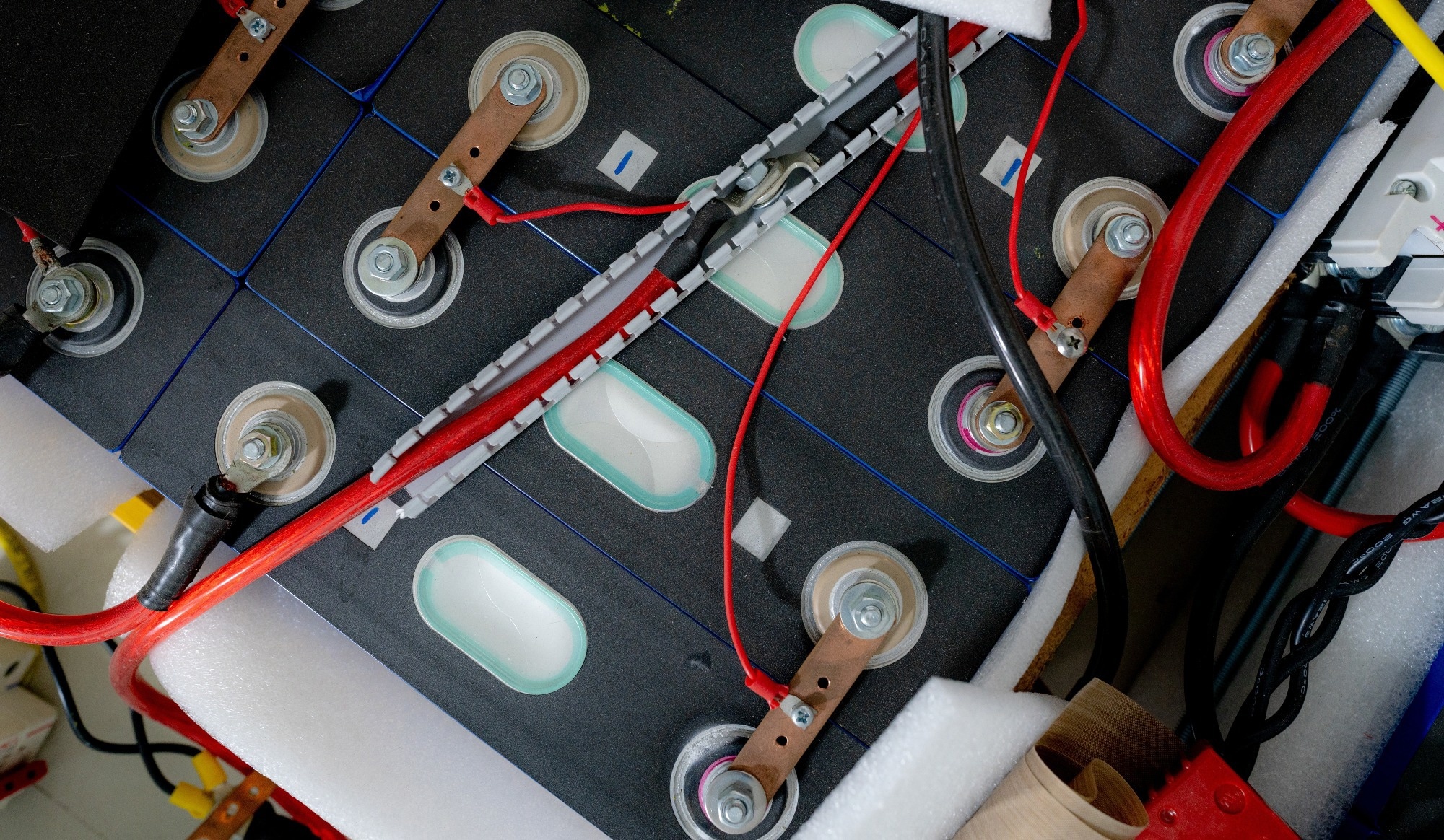 By Muhammad OsamaReviewed by Lexie CornerMay 12 2025
By Muhammad OsamaReviewed by Lexie CornerMay 12 2025A recent study published in Advanced Science examines how the structure of linear polymer cathodes affects the performance of aqueous zinc-ion batteries (AZIBs).
Focusing on the role of active site density, the researchers synthesized two polymers (TABQ-DHBQ and TAPT-DHBQ) and used a combination of experiments and theoretical modeling to test a key assumption in battery design: that more active sites always translate to better energy storage.

Image Credit: Fahroni/Shutterstock.com
Challenges in Aqueous Zinc-Ion Batteries
AZIBs are being studied as lower-cost, safer, and more environmentally friendly alternatives to lithium-ion batteries (LIBs). While they offer advantages like high theoretical capacity and non-flammable electrolytes, their relatively low energy density limits practical applications.
To address this, researchers are working on several strategies: increasing the density of redox-active sites, optimizing voltage profiles, and modifying electrolytes with additives.
Electrolyte additives such as iodide can improve performance by enabling more reversible ion coordination. However, side effects like the shuttle effect, where active species move uncontrollably between electrodes, remain an issue.
Investigating Polymer Cathodes for Enhanced Performance
In this study, the team focused on how the spacing and density of active sites influence battery performance.
They synthesized TABQ-DHBQ and TAPT-DHBQ using a one-step polycondensation method with specific monomers: 2,3,7,8-tetraaminophenazine-1,4,6,9-tetraone (TAPT), 2,3,5,6-tetraaminocyclohexa-2,5-diene-1,4-dione (TABQ), and 2,5-dihydroxycyclohexa-2,5-diene-1,4-dione (DHBQ). The resulting materials contained carbonyl and imine groups that were active sites for zinc ion (Zn2+) and proton (H+) storage.
Material characterization involved FTIR spectroscopy, solid-state NMR, XPS, and density functional theory (DFT). Electrochemical testing was done using 2032 coin cells, with zinc foil as the anode, a (ZnSO4) aqueous electrolyte, and the synthesized polymers as cathodes. Cyclic voltammetry (CV) and galvanostatic charge/discharge (GCD) were used to evaluate performance. The theoretical specific capacities were calculated as 545.26 mAh g-1 for TAPT-DHBQ and 379.14 mAh g-1 for TABQ-DHBQ.
Zinc iodide (ZnI₂) was introduced as an additive to lower charge transfer resistance and support reversible Zn²⁺ and H⁺ ion coordination.
Results: More Active Sites ≠ Better Performance
The study found that while the theoretical specific capacities for TAPT-DHBQ and TABQ-DHBQ were 545.26 and 379.14 mAh g⁻¹, respectively, the actual capacities were lower—280 mAh g⁻¹ for TAPT-DHBQ and 325 mAh g⁻¹ for TABQ-DHBQ. In TAPT-DHBQ, the high density of active sites led to overlapping interactions that limited their effective use.
DFT calculations supported this, showing that excessive site density caused electron cloud dispersion and weakened redox activity. TABQ-DHBQ, with fewer but more optimally spaced active sites, offered better electrochemical performance.
Adding ZnI₂ to the electrolyte improved both materials. At a current density of 1 A g⁻¹, TABQ-DHBQ and TAPT-DHBQ reached specific capacities of 618 and 607 mAh g⁻¹, respectively. Energy densities rose to 678.62 Wh kg⁻¹ for TABQ-DHBQ and 670.7 Wh kg⁻¹ for TAPT-DHBQ. Both cathodes showed strong cycling stability, retaining over 63 % of their capacity after 2,000 cycles at 10 A g⁻¹, with near-100 % coulombic efficiency.
Download your PDF copy now!
Implications for Battery Design
The study highlights that higher active site density alone does not guarantee improved capacity. Instead, battery performance depends on how well the molecular structure supports ion interactions and electron transfer.
TABQ-DHBQ and TAPT-DHBQ, particularly when used with ZnI₂, demonstrate that linear polymers can achieve strong capacity and cycling stability under the right conditions.
Future work should explore new polymer designs and a broader range of electrolyte additives to improve performance further. Real-world testing and scale-up will also be essential for moving these findings from the lab to application.
Journal Reference
Dai, Y., et al. Linear Polymer Cathode Materials for Highly Efficient Aqueous Zinc-Ion Batteries: Is the High Active Sites Density Necessary?. Advanced Science, 2503156 (2025). DOI: 10.1002/advs.202503156, https://advanced.onlinelibrary.wiley.com/doi/10.1002/advs.202503156
Disclaimer: The views expressed here are those of the author expressed in their private capacity and do not necessarily represent the views of AZoM.com Limited T/A AZoNetwork the owner and operator of this website. This disclaimer forms part of the Terms and conditions of use of this website.